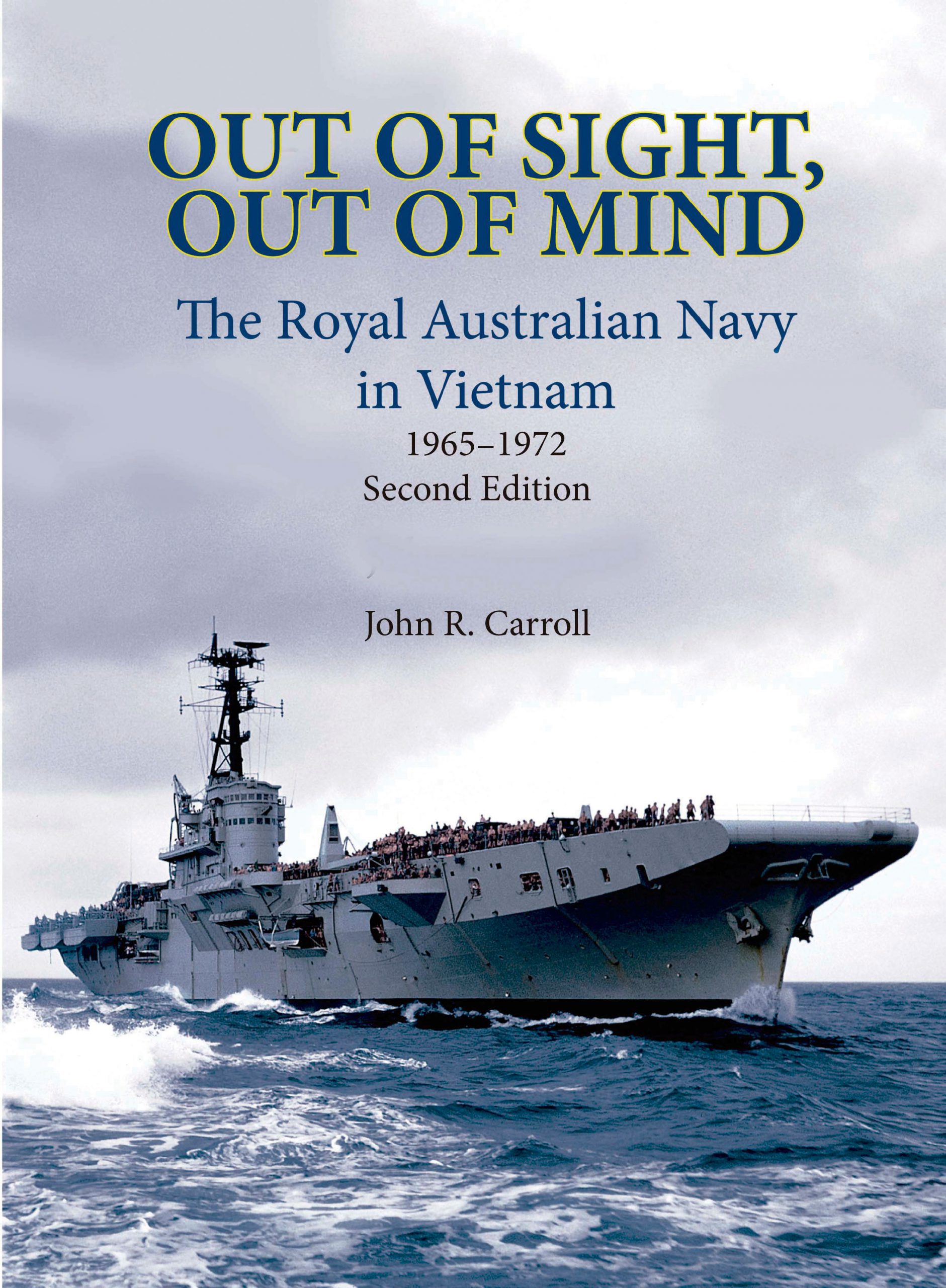Recognition of the RAN contribution to the Australian involvement in Vietnam between 1965 and 1972 is usually limited to naval gunfire support provided by destroyers with only a passing reference to logistic support by HMAS Sydney.

Paperback 258pp RRP $34.95
The author served twice in HMAS Sydney: in 1967 and again in 1972. Both editions of this book are based on his doctoral dissertation, and have several aims: to demonstrate the vital importance of the RAN’s logistic contribution to 1 Australian Task Force (1ATF) in Vietnam, to illustrate the risks involved, to note the injustice of not recognizing for many years the service of those who served and also how they were exposed to extreme risk from Agent Orange.
John Carroll writes with a determination to document the living and working conditions in Sydney, to correct errors that have appeared in previous histories and to show the risks the ships experienced while anchored in Vung Tau harbour unloading or backloading soldiers and stores. He has corresponded with surviving commanding officers of the escorting destroyers and frigates and in the chapter “In Their Own Words” he records the words of some of those – both captains and junior sailors – who sailed in Sydney and her escorts. The comprehensive bibliography, which includes the logs and reports of proceedings from Sydney’s escorts, and the almost 900 endnotes are an indication of the research that led to this book.
HMAS Sydney was a World War II light fleet carrier converted to a fast troop transport to support the Australian Army in Vietnam. As Sydney had not been built for service in the tropics, conditions below decks were extremely uncomfortable and almost intolerable in the machinery spaces.
Sydney made 25 voyages between Australia and Vietnam: the first in June 1965 to transport 338 men of 1RAR to Vietnam and the last in November 1972, and on each voyage she was escorted by between one and three destroyers or frigates because of the possibility of a deniable submarine attack, and on several voyages she also embarked a flight of Westland ASW helicopters. In Vung Tau harbour the threat of attack by underwater swimmers required constant vigilance (Operation Awkward), and at night the ships always went to sea rather than remaining at anchor. Despite this, for many years the crews were denied benefits because the ships were denied ‘special duty’ status.
The carcinogenic herbicide, Agent Orange, posed a particular hazard as it was washed downstream into the harbour where the ships were anchored and was carried over with the distillate from the ships’ evaporators into the potable water used by the ships’ companies.
The appendixes include details of Sydney and her escorts, the anchorage positions and details of each of the 25 voyages.
The logistic support of 1ATF would have been almost impossible without the support of the RAN and anyone interested in this period should read this meticulously detailed and persuasive book.
Reviewed for RUSIV by Roger Buxton, May 2020
Contact Royal United Services Institute about this article.






